The view from the master suite of Pazo do Tambre
We have just returned from the ancient city of Santiago de Compostela in northern Spain. I wish I could tell you we had joined the many other pilgrims on their long trek along the Camino, but we made it much easier for ourselves and flew into the airport.
I also have to confess that our reason for visiting the region was much less spiritual than that of the Christian walkers: we were there to celebrate my mother-in-law’s 90th birthday and most of our four days there was spent eating, drinking, dancing and playing silly games with a bit of sight-seeing thrown in.
In the search for accommodation to hold 14 people, one of the grandchildren had found a wonderful property, Pazo do Tambre, about half an hour’s drive from the airport. The 19th century manor house is surrounded by a spectacular 200,000 m2 Finca with gardens, woods, fountains, lakes, ponds, a gorgeous swimming pool and a romantic jetty close to the River Tambre. There is also a church on the land and separate accommodation for many more guests, so this a popular wedding venue.
We made much use of the covered barbecue area with its huge log fire, as the temperature was around 13 degrees most of the time – much cooler than the 20 degrees at home, but I did have one impromptu midnight swim even though the water in the pool was shockingly cold.
The interior of the manor house was very impressive, packed with period furniture and antique paintings with a room for billiards and another with a card table. All the bedrooms were fabulously grand – ours had a four poster bed - and breakfast was served every day in the dining room. We felt very privileged and imagined for a short while that we were living in Downton Abbey!
]I took a video that I intended to post for you, but realised on my return that I had filmed it portrait which I had forgotten doesn’t work on Substack. Videos need to be landscape. I also took lots of pictures, but they don’t really do it justice. If you’re interested, take a look at this link that shows the Manor House and surroundings in all their grandeur. https://galiciaholiday.com/properties/50-villa-tambre-297-magestic-riverside-galician-palace/
Once the birthday celebrations were over and everyone had gone their separate ways, my husband and I stayed on for a few days at a hotel to explore Santiago. This turned into an entirely different kind of experience. We began with a guided tour of the famous cathedral where the queues to touch the statue of Saint James were long and slow moving. The ritual of pilgrims patting or embracing the statue, to thank Saint James for their journey, has been practiced since the early 13th century, when the cathedral was completed.
What we had not realised, was that we had arrived during an especially important event in the Spanish Catholic Calendar. It was Semana Santa, (Holy Week) which commemorates the Passion of Jesus Christ and is a time of religious processions In towns and cities across the country. The following evening, when we were returning from a Tapas Tour of the city, we stumbled across a candlelit procession with musicians following a large float bearing dozens of tall church candles around a statue of the Virgin Mary. It was very humbling.
Pilgrims and tourists alike watched as the float was carried to the cathedral. What surprised us somewhat were the figures clad in robes and tall pointed hats. In this instance, they were gold, but I have since learned many Spanish processions feature white hats like those below in Cadiz. These participants in the processions, are known as penitents but I think you will see why we found the situation a bit disturbing.
This extract from a 2017 BBC article by Kelly Grovier explains it well
https://www.bbc.co.uk/culture/article/20170413-this-white-hood-carries-many-meanings
“Despite its diverse ethnic origins, the tall pointed hat is likely, today, to elicit revulsion from those in the West who associate its distinctive shape with the sharp end of racial bigotry and the intimidating garb of the Ku Klux Klan. But photos circulating in the media this week from Seville, Spain, serve as a reminder of the multifarious meanings of even the most seemingly singular and inimitable of cultural symbols.
Captured during a parade celebrating Holy Week (which precedes Easter Sunday in the Christian calendar), the photos chronicle the procession of la Borriquita brotherhood, whose members (or ‘penitents’) hide their identities with pointy hooded hats (or ‘capirotes’) in a ritual that dates back at least as far as the Inquisition. Historically, the capirote was intended as a mark of humiliation and was worn by those publicly punished by Church officials for doctrinal violations. In time, the cap was adopted by Catholic brotherhoods as a voluntary guise for their flagellants (those flogging themselves as penance for their sins)”.
In Santiago de Compostela, the procession of the Virgin Mary to the cathedral is a prominent part of Semana Santa. The city is also known for its Botafumeiro, a large incense burner that is swung from the cathedral ceiling during the religious services of Holy Week. We saw this huge artefact in the cathedral waiting to be hoisted into place.
On our last day we visited the city’s market. I love a market abroad, don’t you? I’m more familiar with those in France, but this one was amazing, with every type of food you can think of plus a flower stall and one elderly woman who had just brought armfuls of arum lilies along to sell.
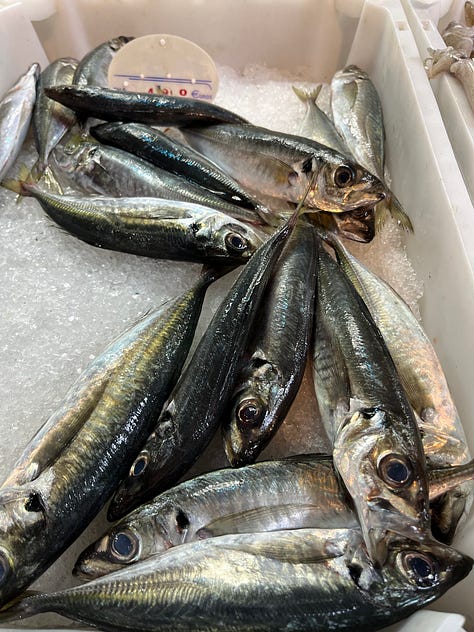


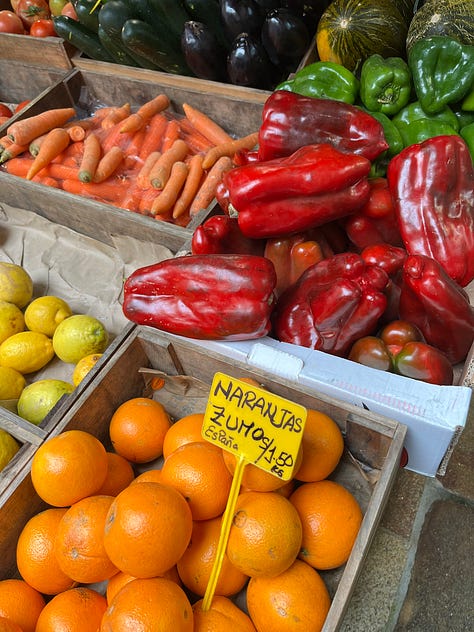
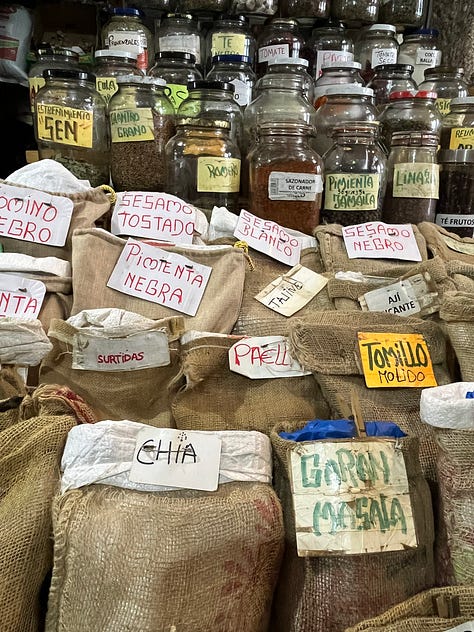
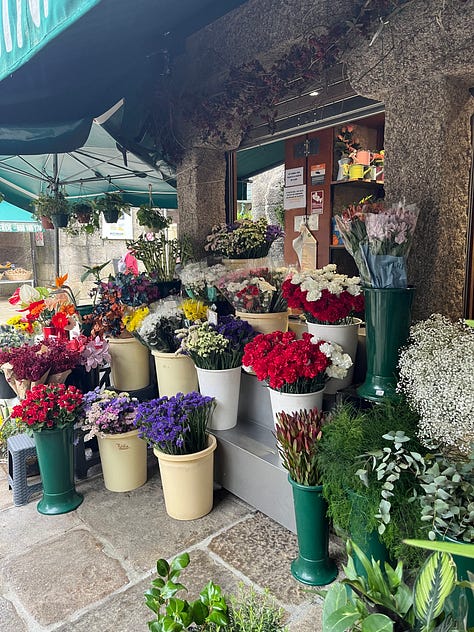
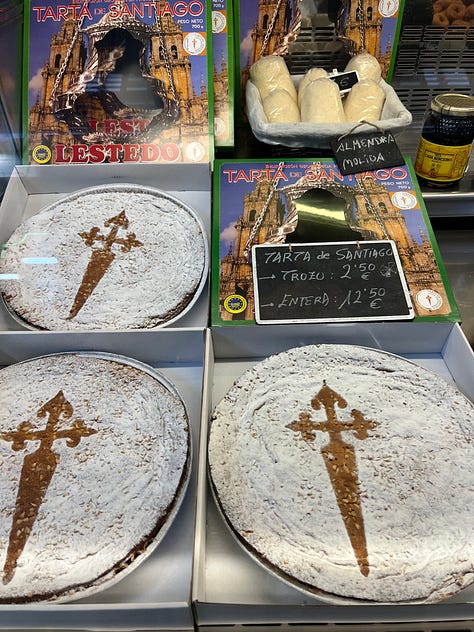
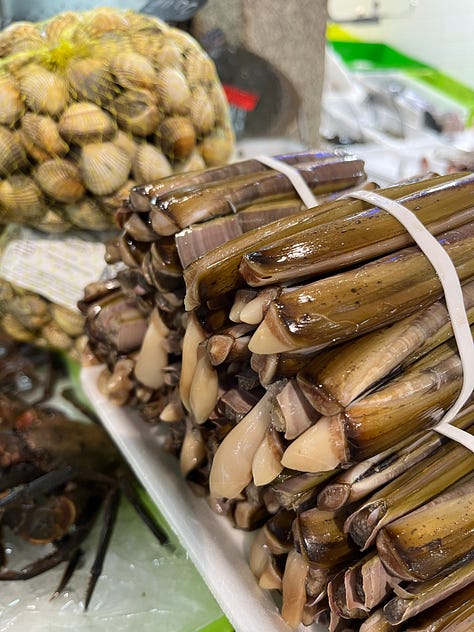
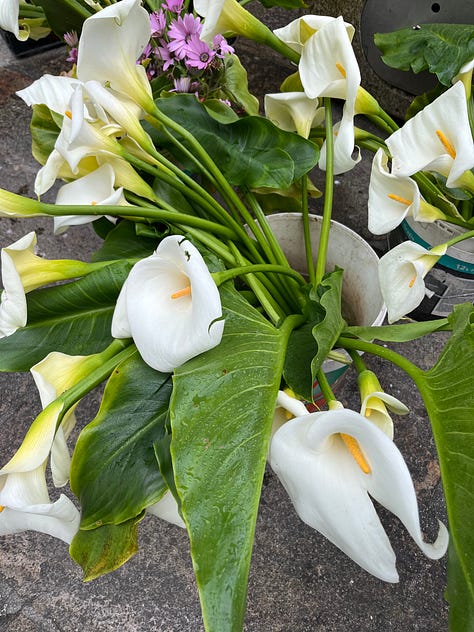
We also visited a fascinating shop where almost everything was made from chestnuts.
We sampled several liquers, honey and sweet preserves and I was intrigued by this liquor made from gorse
Our trip brought great food, unusual wines and interesting culture and we learned a lot. One of the things we most loved was that whenever we sat down in any cafe/bar to have a drink, tapas automatically appeared, free of charge. We didn’t ask for it, or specify what we wanted. We were simply given slices of tortilla, tostada or slices of local cheese. How I wish that happened at home. The most we’re likely to get is some crisps or salted peanuts and we have to pay through the nose for them.
I just want to finish with two more images. Isn’t this clever? At one taps bar our bill came attached to this faux can lid.
And finally, a door knocker. One often sees them in France and Spain but this brass one was especially grand.
That’s it for this week, but as I missed a post while I was away, I shall send another in the coming days. Several of you enjoyed the video tour of my garden in March and someone asked if I could show you more as the garden changes through the seasons. I’m happy to oblige. Look out for that later in the week.
Thank you for reading and if you have enjoyed this piece, please give it a like and/or share it with others. This gets the algorithms working to introduce me to new readers.
If you’d like to comment on anything in the above, please do so here
If you’d like to support me further, become a free or a paying subscriber which earns me a little money for the work I do. For either, just click below
FOOTNOTE
You’re reading Home Truths, from me, Susy Smith. I write here on an eclectic mix of subjects about home and lifestyle. I am many things: a parent of grown-up kids, a dog owner, a gardener and a compulsive mover of vases (I worked for years as a stylist). I am also a writer/editor and former Editor-in-Chief of British Country Living Magazine.

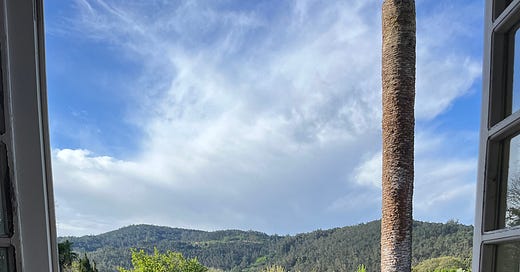



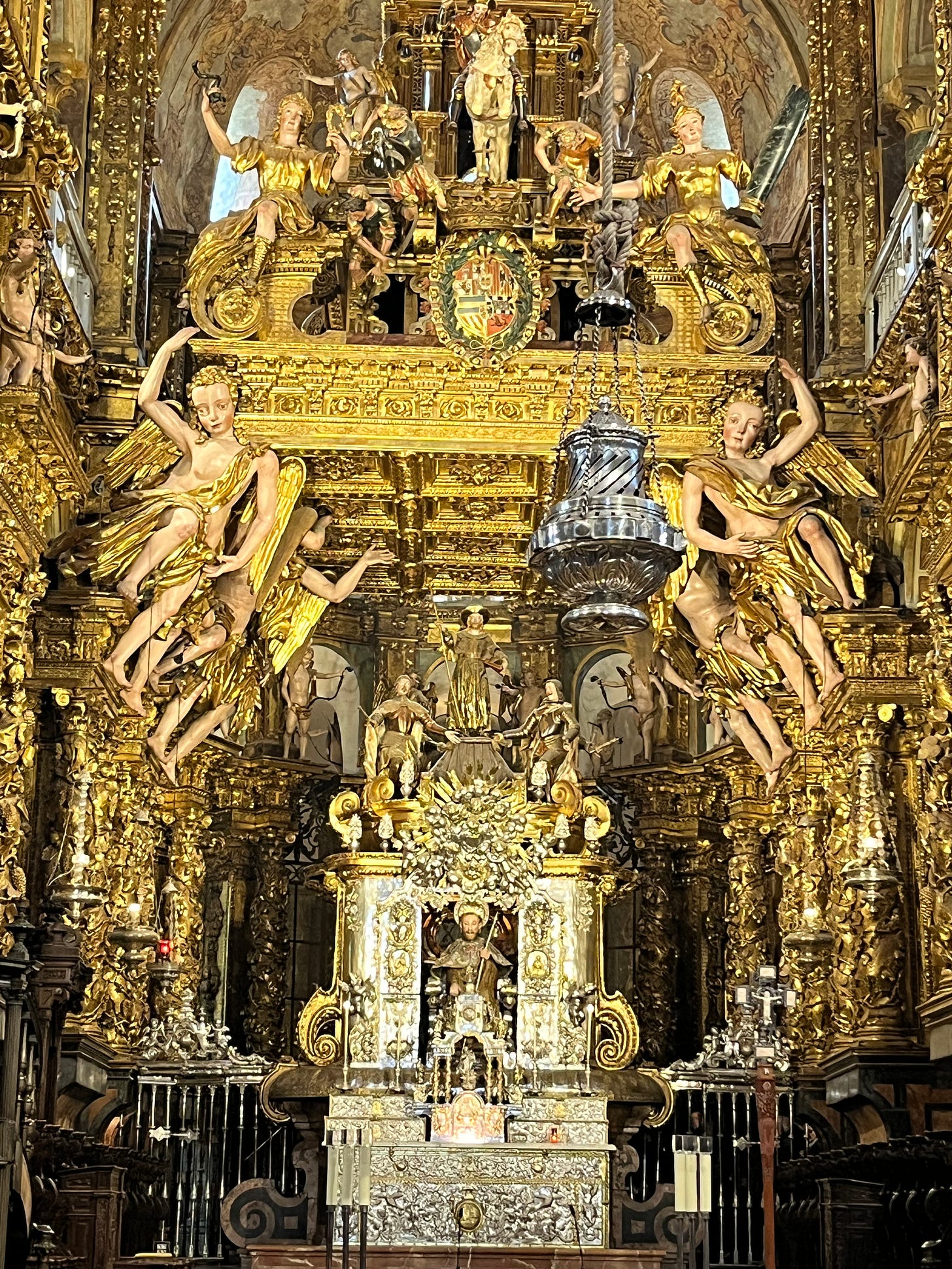


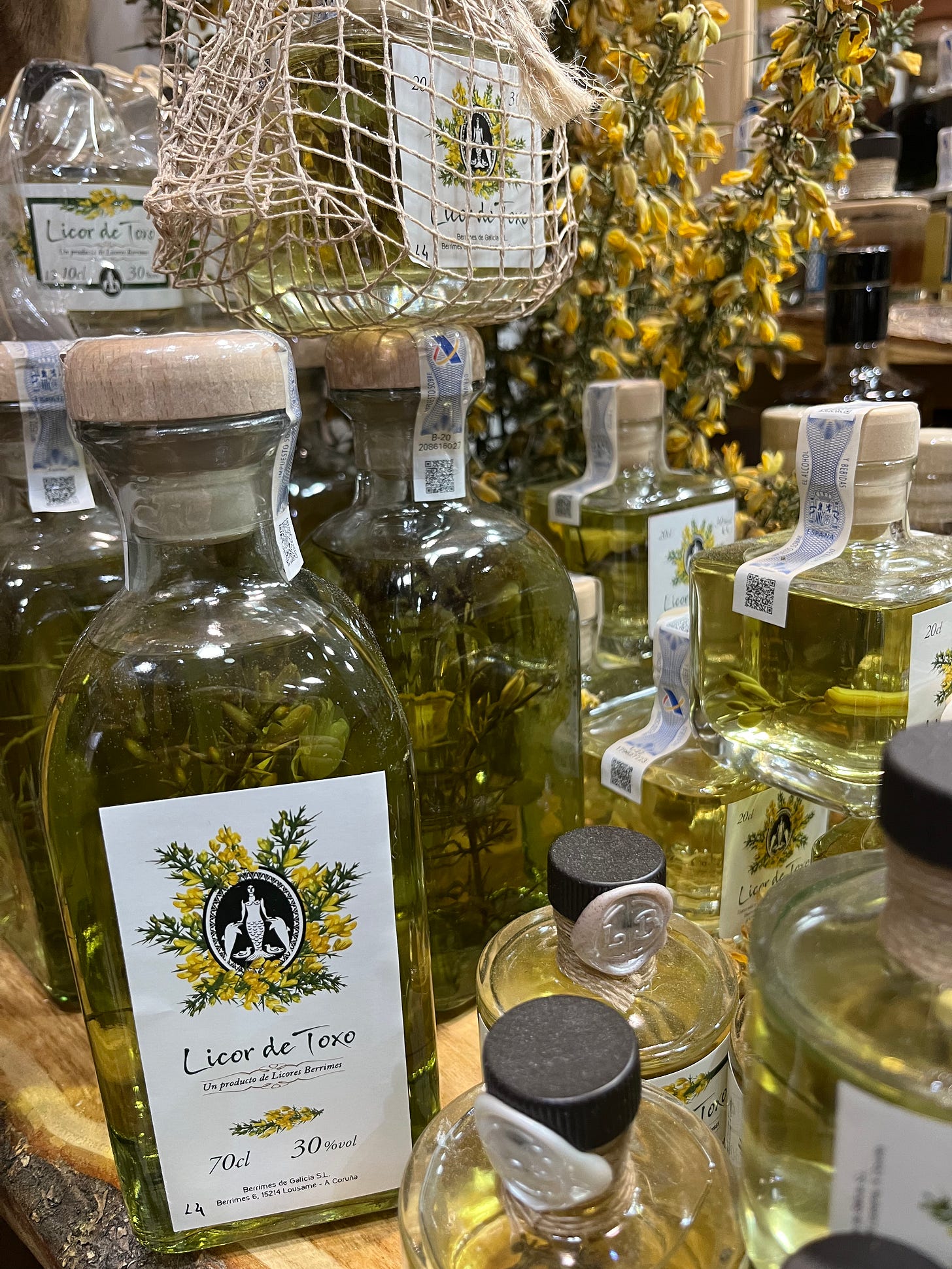
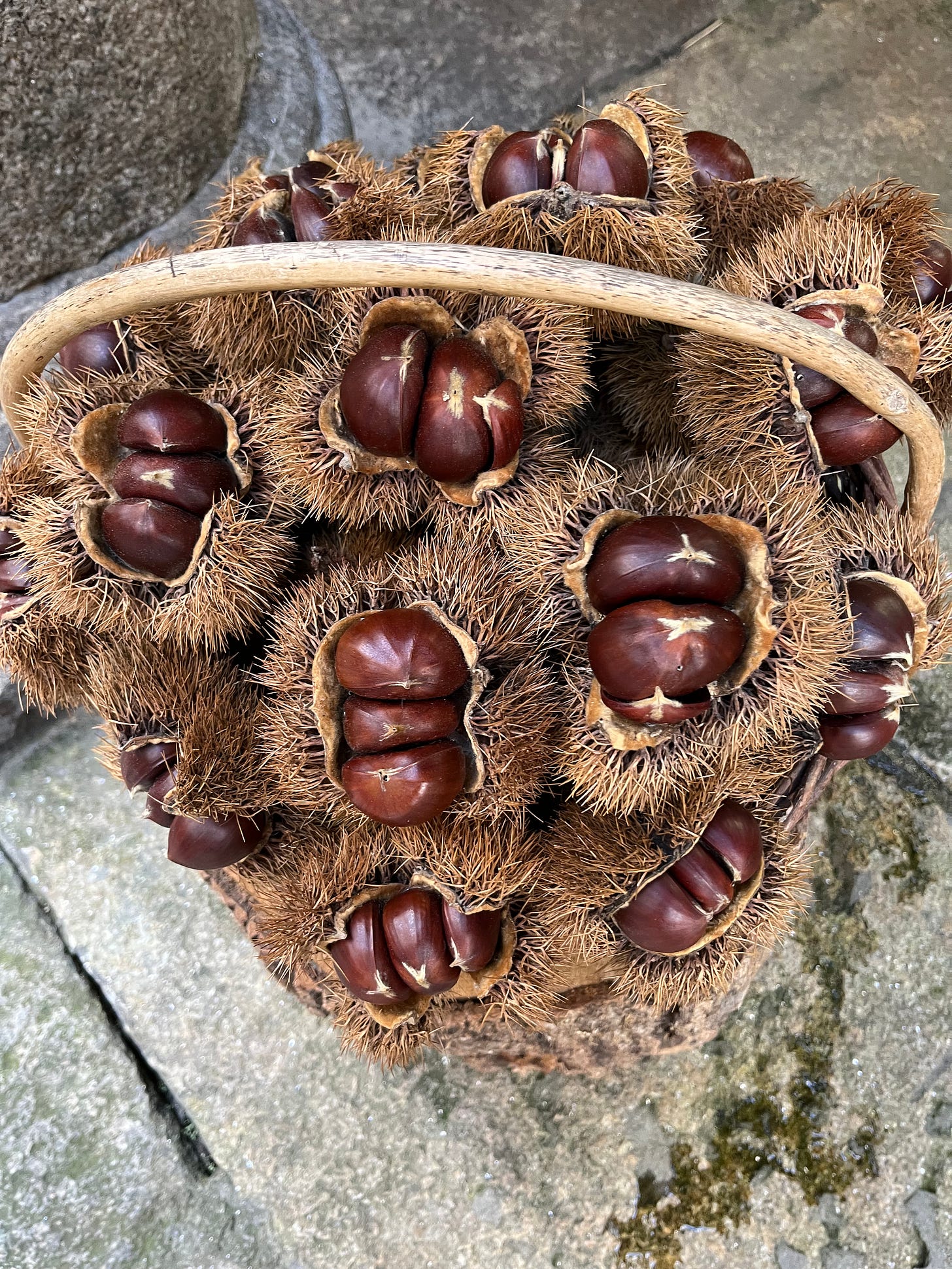

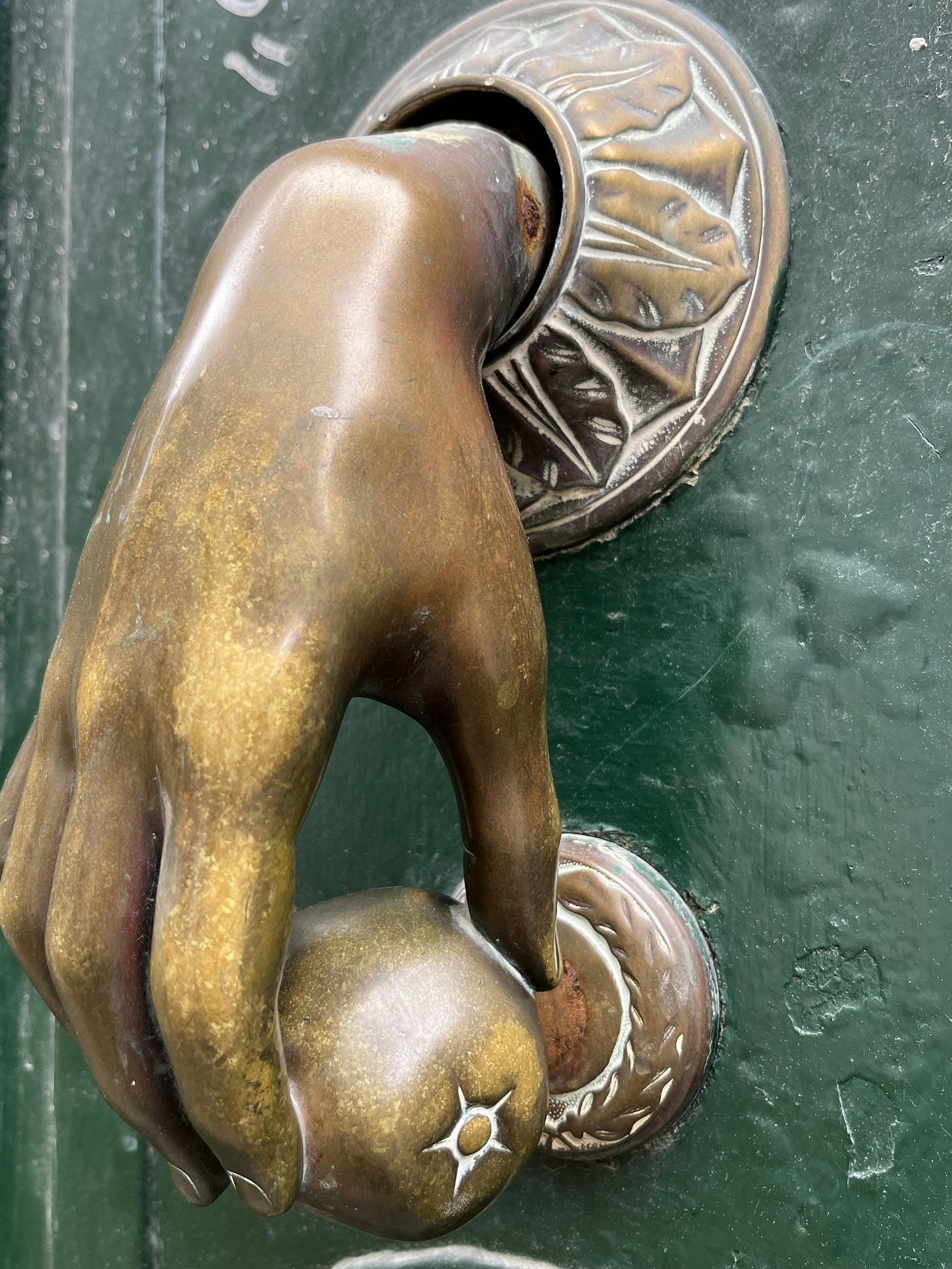
How brilliant to share your love of gardening and knowledge with your daughter! I learnt so much from my parents and I think of them a lot when I'm in my garden ❤️
I enjoy your stories and adventures after reading so many in English Country Living.Thank you.